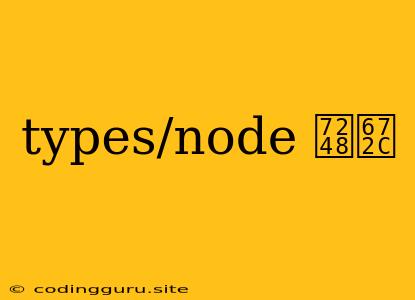Understanding and Managing Node.js Versions
Node.js, a powerful JavaScript runtime environment, is constantly evolving with new features and improvements. This evolution is reflected in the frequent releases of new versions. To leverage the latest advancements and ensure compatibility with your projects, it's crucial to understand the different types of Node.js versions and how to manage them effectively.
What are the Types of Node.js Versions?
Node.js releases follow a versioning scheme that helps classify and track different versions. The primary types of Node.js versions are:
1. Major Versions: These versions represent significant changes in the Node.js core, often introducing new features, API changes, and potentially breaking changes. They are typically identified by the first digit in the version number, such as v12, v14, or v16.
2. Minor Versions: These versions introduce smaller improvements, bug fixes, and security patches. They are typically identified by the second digit in the version number, such as v14.18, v16.13, or v18.7.
3. Patch Versions: These versions address minor issues and security vulnerabilities. They are identified by the third digit in the version number, such as v14.18.1, v16.13.2, or v18.7.0.
4. Long-Term Support (LTS) Versions: These versions are considered stable and receive long-term support from the Node.js Foundation. They are often recommended for production environments, as they offer extended security updates and bug fixes. LTS versions are typically indicated with a "maintenance" tag, such as v14.18.1 (LTS).
How to Manage Node.js Versions
Managing multiple Node.js versions is essential for development and testing purposes. There are several tools and techniques to simplify this process:
1. Node Version Manager (nvm): Nvm is a popular command-line tool that allows you to install and switch between multiple Node.js versions. It provides a convenient way to isolate projects from version incompatibilities and experiment with different versions.
2. NVM for Windows: Similar to nvm, this tool offers the same functionalities for Windows users. It allows you to install and manage different Node.js versions on your Windows system.
3. Version Managers for Specific Operating Systems: There are also specific version managers available for other operating systems like macOS and Linux. These tools offer tailored solutions for managing Node.js versions on those platforms.
4. Docker: Docker containers provide a self-contained environment where you can run specific Node.js versions without impacting your system's global Node.js installation. This is particularly useful for testing and deploying applications.
Tips for Managing Node.js Versions
1. Choose the Right Version for Your Project: Determine the Node.js version requirements for your project, considering compatibility with libraries and dependencies.
2. Document Version Dependencies: Clearly document the Node.js version required for each project to avoid conflicts during development and deployment.
3. Use Version Management Tools: Utilize tools like nvm, NVM for Windows, or specific version managers for your operating system to simplify version management.
4. Consider Docker for Isolation: Utilize Docker to create isolated environments for different Node.js versions, especially for testing and deployment.
Example: Using nvm for Node.js Version Management
# Install nvm
curl -o- https://raw.githubusercontent.com/nvm-sh/nvm/v0.39.1/install.sh | bash
# List available Node.js versions
nvm ls-remote
# Install Node.js version 16.13
nvm install 16.13
# Switch to Node.js version 16.13
nvm use 16.13
# Verify the current Node.js version
node -v
Conclusion
Understanding the different types of Node.js versions and mastering version management techniques is crucial for efficient and reliable development. By utilizing tools and techniques, you can seamlessly manage multiple versions, ensure project compatibility, and leverage the latest advancements in the Node.js ecosystem.
